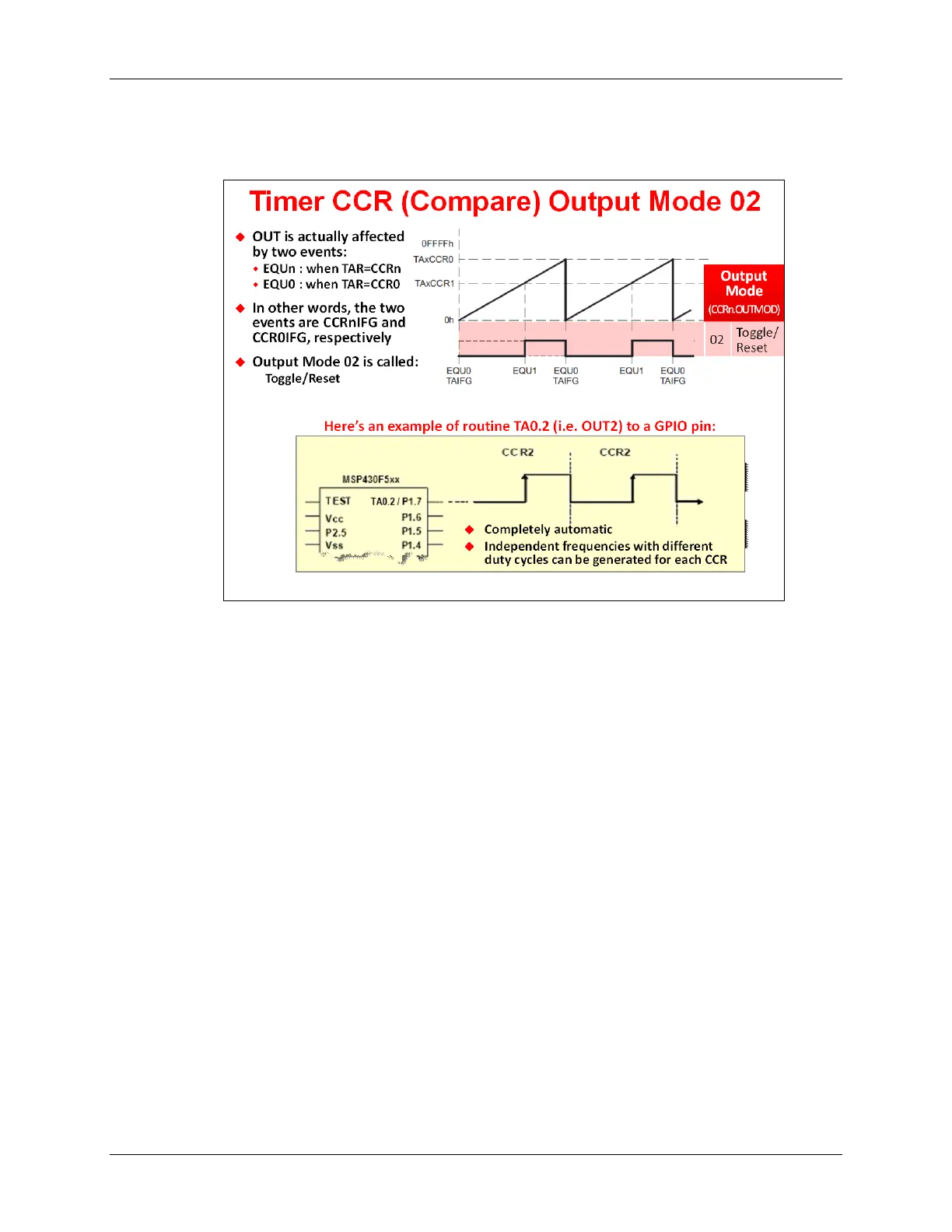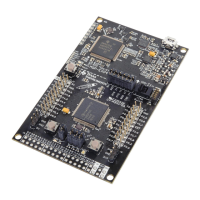Timer Details: Configuring TIMER_A
Routing the OUT signal to a pin, as shown here, lets us drive external hardware directly from the
output of the timer. (In fact, we’ll use this feature to let the timer directly drive an LED during one
of the upcoming lab exercises.)
MSP430 Workshop - Timers 6 - 27

